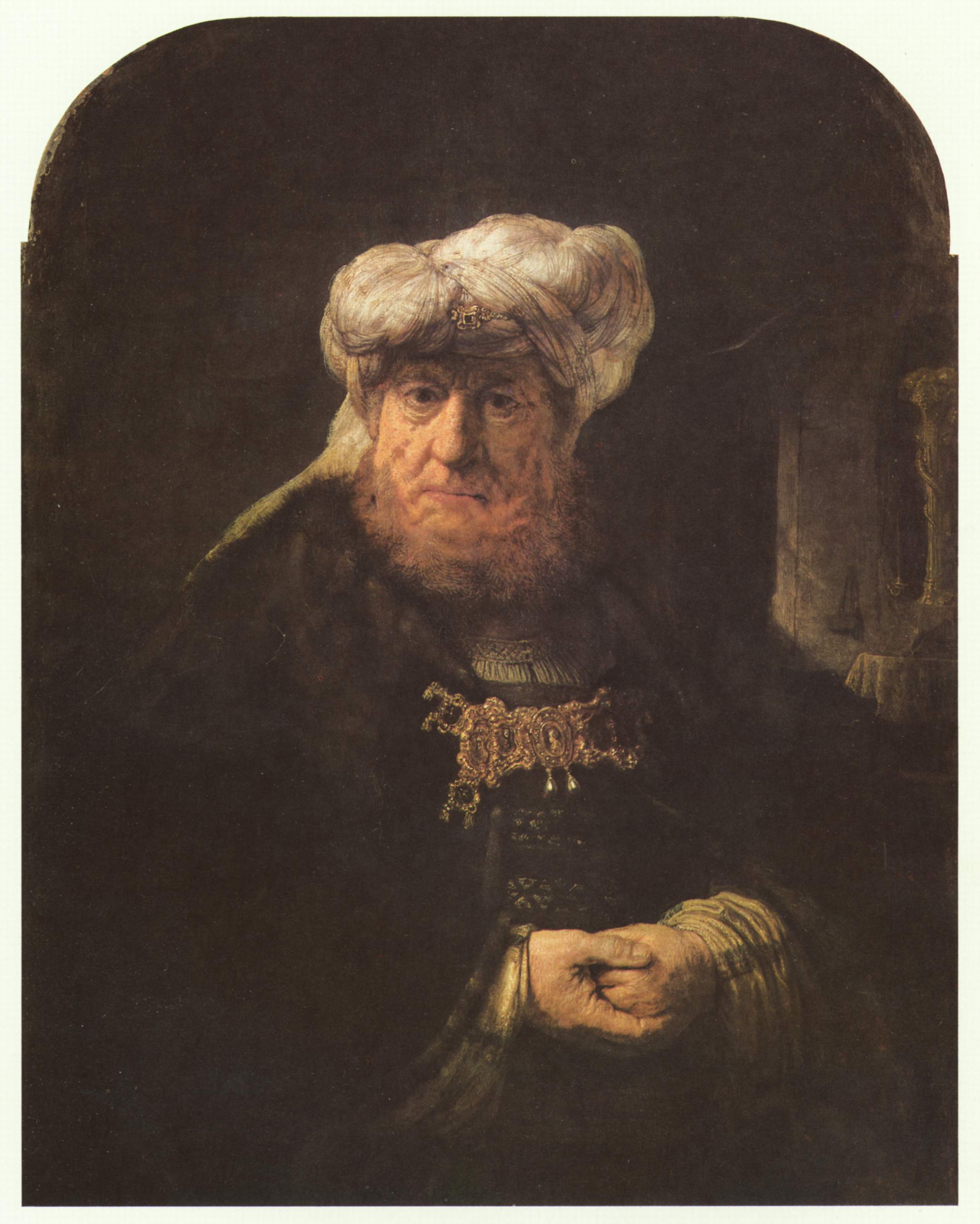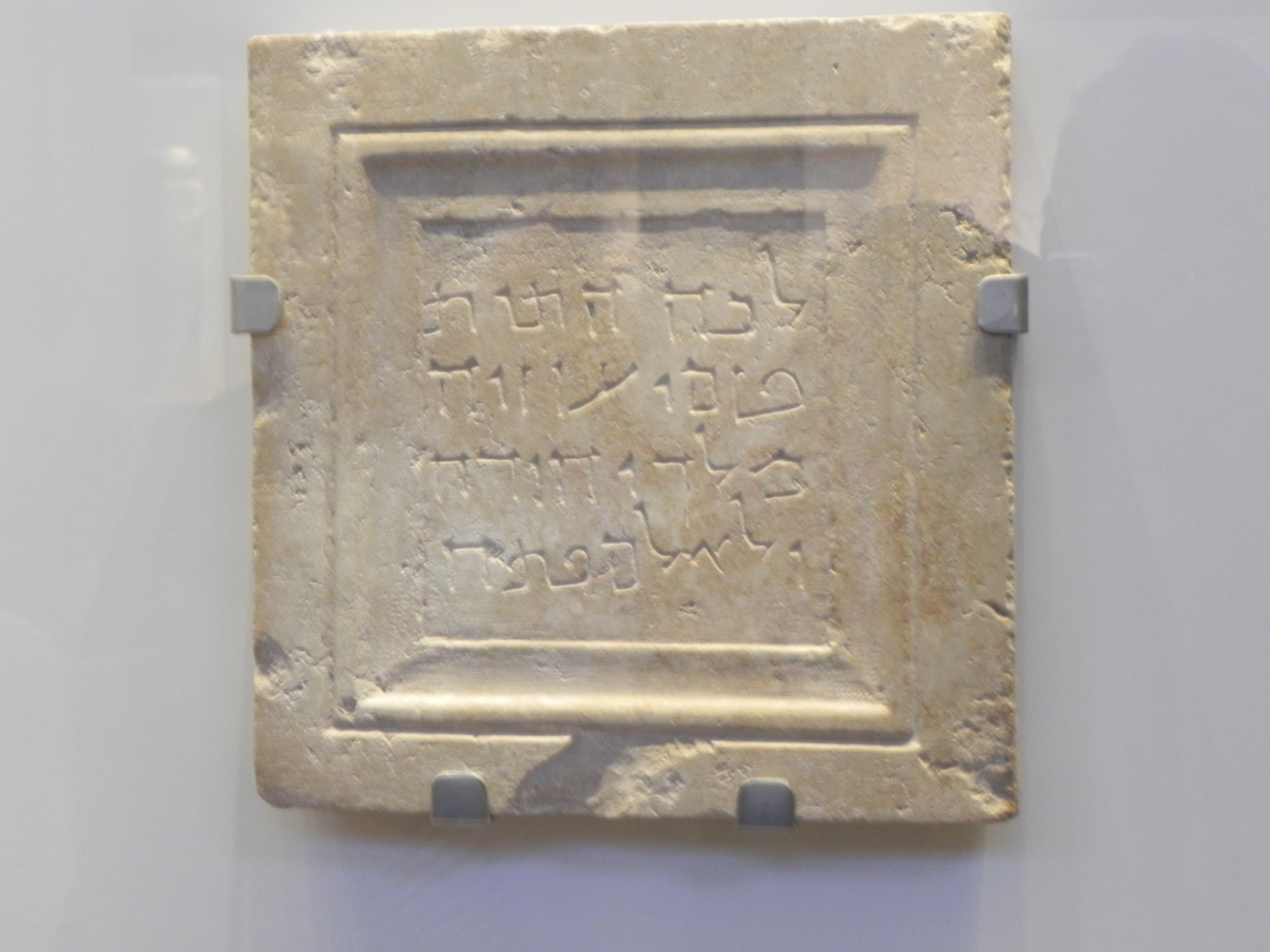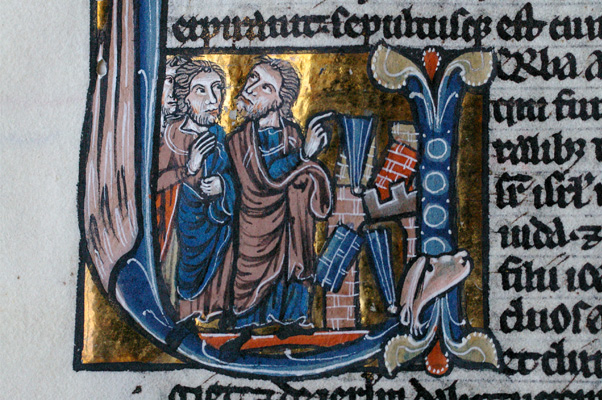1. Overview
Uzziah, also known as Azariah, was the tenth king of the ancient Kingdom of Judah, reigning for 52 years from the age of 16. His long reign, encompassing periods of co-regency with both his father Amaziah and his son Jotham, was marked by significant military expansion, national defense enhancements, and agricultural prosperity. Initially characterized by piety and faithfulness to God, Uzziah's later years were marred by an act of pride when he attempted to usurp priestly duties, for which he was afflicted with leprosy. This divine punishment led to his isolation and his son Jotham assuming governmental responsibilities. His reign is a key period for understanding Judah's political and social context, as attested by biblical accounts, archaeological findings, and chronological studies that aim to reconcile various historical records.
2. Name
King Uzziah is known by two principal names in the Hebrew Bible: Uzziah and Azariah. The name עֻזִּיָּהוּ'UzzīyyāhūHebrew (Uzziah) translates to "my strength is Yah" or "Yahweh strengthens," while עֲזַרְיָה'Azaryā'Hebrew (Azariah) means "Yahweh has helped" or "Yahweh is my strength."
The usage of these names varies across biblical texts. The 2 Kings mentions Azariah eight times and Uzziah four times, often introducing him as Azariah and later referring to him as Uzziah, particularly when mentioning his son Jotham. In contrast, the 2 Chronicles consistently refers to him as Uzziah. Prophetic books such as Amos, Hosea, and Isaiah also predominantly use Uzziah.
Some scholars suggest that the use of Azariah might be a copyist's error, while others propose that kings sometimes used both a royal name and a personal or secular name. For example, Solomon's birth name was Jedidiah. In this context, Uzziah could be considered his royal name, adopted at the time of anointing and coronation, while Azariah might have been his personal name.
3. Life and Reign
King Uzziah's reign saw a period of significant growth and influence for the Kingdom of Judah, marked by military success and economic prosperity, yet also by a crucial act of disobedience that led to his affliction.
3.1. Early Reign and Piety
Uzziah ascended to the throne of Judah at the young age of 16. His reign lasted for 52 years, making it one of the longest in Judah's history, second only to Manasseh. The initial period of his rule, lasting 24 years, was as a co-regent with his father, Amaziah.
During the early part of his reign, Uzziah was characterized by his faithfulness to God. He "did what was right in the eyes of the Lord," especially under the guidance of a prophet named Zechariah, who taught him to revere God. This early piety contributed to his initial successes. Despite his dedication, Uzziah did not remove the "high places," locations where people continued to offer sacrifices and burn incense, which was a deviation from centralized worship in Jerusalem.
3.2. Military and Economic Prosperity
Uzziah's reign was a time of immense military and economic growth for Judah, allowing the kingdom to recover from losses incurred during previous reigns. He made significant advancements in national defense and territorial expansion.
Uzziah achieved notable military victories, conquering the Philistines and Arabs in Gur-Baal. He destroyed the city walls of Gath, Jabneh, and Ashdod, and established new towns in the Philistine territory. He also received tribute from the Ammonites, expanding Judah's influence. His fame spread widely, reaching the borders of Egypt, marking him as a formidable ruler.

He greatly strengthened Jerusalem's fortifications, building towers and corner defenses equipped with innovative war machines designed by skilled engineers, capable of shooting arrows and hurling large stones. Beyond Jerusalem, he constructed towers and dug numerous reservoirs in the wilderness to support his extensive livestock. Uzziah was known as a lover of the land, actively promoting agriculture and viticulture. He employed farmers and vineyard workers in both the mountainous regions and the fertile plains.
Uzziah also reorganized and re-equipped his army, forming an elite military force. His fighting men were cataloged by the scribe Jeiel and the administrator Maaseiah, with the overall combat force of 307,500 under the command of Hananiah. This large army was well-equipped with small shields, spears, helmets, armor, bows, and slingshots. Uzziah's efforts in developing new military technologies further enhanced Judah's defense capabilities, making his realm the largest Judah had seen since the division of the kingdom.
The prosperity during his reign, fueled by military success and agricultural development, also led to increased wealth and luxury in Jerusalem and among the people, which drew criticism from contemporary prophets like Isaiah and Hosea.
3.3. Disobedience and Leprosy
Despite his great achievements and initial faithfulness, Uzziah's strength eventually led to his downfall through pride and disobedience. He presumptuously attempted to usurp the role of the priests by entering the Temple to burn incense on the altar, an act reserved exclusively for the consecrated priests, the sons of Aaron.
High priest Azariah, along with eighty courageous priests, confronted Uzziah, admonishing him, "It is not for you, Uzziah, to burn incense to the Lord, but for the priests, the sons of Aaron, who are consecrated to burn incense." While Uzziah was still holding the censer and became enraged at their resistance, leprosy (Hebrew: tzaraath) suddenly appeared on his forehead.
According to Josephus Flavius's Antiquities, at that very moment, a great earthquake shook the ground, a rent appeared in the Temple, and the sun's bright rays shone through, striking the king's face, immediately causing the leprosy to seize him.
Uzziah was swiftly driven from the Temple and compelled to live in "a separate house" in isolation until his death, as he was excluded from the house of the Lord due to his ritual impurity. Following this affliction, his son Jotham took charge of the palace and governed the people, serving as a co-regent for the remaining 11 years of Uzziah's life.
3.4. Death and Burial
Uzziah remained afflicted with leprosy until his death. Due to his condition, he was not buried in the main royal tombs but was interred in a separate grave "in the field of the burial which belonged to the kings," consistent with the isolation required for individuals with leprosy.
4. Historical and Archaeological Evidence
Archaeological discoveries and extra-biblical records provide valuable insights into King Uzziah's reign, corroborating some biblical accounts and offering additional historical context.
4.1. Uzziah Tablet

In 1931, the Uzziah Tablet, a significant archaeological find, was discovered by Professor Eleazar Sukenik of the Hebrew University of Jerusalem. He found the artifact within the collection of the Russian Convent of the Ascension on the Mount of Olives. The tablet is a stone slab measuring approximately 14 in (35 cm) by 13 in (34 cm) with a thickness of 2.4 in (6 cm).
The exact origin of the tablet before its acquisition by the convent is unknown, as it was not documented by the institution. However, a prominent theory suggests that it might have been unearthed during the construction of the convent in the 1870s, based on medieval Jewish sources that located Uzziah's tomb on the modern site of the convent.
The inscription on the tablet is written in an Aramaic dialect, very similar to Biblical Aramaic, and its script dates to around 30-70 CE, approximately 700 years after Uzziah's supposed death. The inscription translates to: "Hither were brought the bones of Uzziah, king of Judah. Not to be opened." This suggests a possible reburial of Uzziah's remains during the Second Temple period, indicating that his original burial site was disturbed or rediscovered centuries later.
4.2. Earthquake in the Days of Uzziah
A major earthquake is referenced in the biblical texts as having occurred during Uzziah's reign. The Book of Amos dates its prophecies to "two years before the earthquake, when Uzziah was king of Judah and Jeroboam II son of Jehoash was king of Israel" (Amos 1:1). Centuries later, the prophet Zechariah (Zechariah 14:5) also alluded to this event, predicting a future earthquake from which people would flee "as you fled from the earthquake in the days of Uzziah king of Judah."
Geological and archaeological investigations have yielded evidence supporting the historicity of this seismic event. Researchers believe they have found indications of a major earthquake at various sites across Israel and Jordan, including Hazor, Deir 'Alla, Gezer, Lachish, Tell Judeideh, and 'En Haseva. The damage observed in the masonry walls at these sites-such as broken ashlar stones, displaced rows of stones, leaning or bowed walls, and collapsed sections where large portions still lie in courses-is consistent with a severe seismic event.

Stratigraphic analysis at these sites tightly confines the destruction to the mid-8th century BCE, with dating errors of approximately 30 years, aligning with Uzziah's reign. For instance, excavations at Hazor revealed walls leaning southward, tilted pillars, and collapsed houses, suggesting earthquake waves from the north. At Gezer, city walls showed heavy stones cracked and moved by several inches, with lower sections displaced outward and upper sections falling inward layer by layer, indicative of a sudden collapse.
Geologists estimate the magnitude of this earthquake to have been at least 7.8, possibly even 8.2. A 2019 report by geologists studying sediment layers on the floor of the Dead Sea further confirmed the occurrence of this significant seismic event.
While the biblical texts date Amos's prophecy relative to the earthquake, the exact timing of the earthquake itself is debated, particularly in relation to the event of Uzziah's leprosy. Josephus and the Talmud suggest the earthquake happened concurrently with Uzziah's attempt to burn incense in the Temple, which is generally dated around 751/750 BCE when Jotham became co-regent. However, archaeological findings generally place the earthquake around 760 BCE, which predates Uzziah's affliction by a decade.
4.3. Mentions in Extra-Biblical Sources
King Uzziah's reign finds potential, though sometimes debated, corroboration in ancient Near Eastern documents, primarily Assyrian records. Archaeological findings from Mesopotamia, including Assyrian correspondence and administrative texts discovered at Nimrud, as well as sculptures from the royal palaces of Nineveh, suggest close ties between Assyria and Judah during the reigns of Uzziah and Manasseh. These records indicate that Uzziah was a contemporary of Tiglath-Pileser III.
A highly fragmentary portion attributed to Tiglath-Pileser's annals mentions a king named "Azaria'u" of "Ya'uda" (seemingly "Azariah of Judah"). While some scholars initially identified this as a reference to King Uzziah, this identification has been challenged. Nadav Na'aman, for example, argued that the fragment belongs to the time of Sennacherib and refers to King Hezekiah rather than Uzziah. Furthermore, two other references to an Azariah in Tiglath-Pileser's annals do not specify his country as Judah, making their identification with the biblical Uzziah dubious.
Despite the challenges in definitively identifying Uzziah in royal Assyrian annals, his name appears in two unprovenanced iconic stone seals discovered in 1858 and 1863. One seal is inscribed לְאָבִיּוּ עֶבֶד עֻזִּיָּהוּl'byw 'bd / 'zywHebrew, meaning "[belonging] to Abiyah, minister of Uziyah." The second seal is inscribed לְשִׁבְנָיָהוּ עֶבֶד עֻזִּיָּהוּlšbnyw ' / bd 'zywHebrew, meaning "[belonging] to Shubnayah, minister of Uziyah." Despite their unprovenanced origin, these seals are considered the first authentic contemporary attestations to King Uzziah, providing direct epigraphic evidence of his existence.
5. Biblical Mentions and Theological Significance
King Uzziah's reign is prominently featured in various biblical books, offering insights into the social, political, and theological landscape of his era.
5.1. In Prophetic Books
Uzziah's reign serves as a crucial chronological marker for several prophetic books, indicating the historical context in which these divine messages were delivered.
The Book of Isaiah begins by stating, "The vision of Isaiah son of Amoz concerning Judah and Jerusalem, which he saw in the days of Uzziah, Jotham, Ahaz and Hezekiah, kings of Judah" (Isaiah 1:1). Furthermore, Isaiah's pivotal call vision, where he sees the Lord of Hosts enthroned, is explicitly dated to "the year that king Uzziah died" (Isaiah 6:1), making Uzziah's death a significant turning point for the prophet's ministry.
The Book of Amos dates its words by stating they were received "two years before the earthquake, when Uzziah was king of Judah and Jeroboam II son of Jehoash was king of Israel" (Amos 1:1). This indicates that Amos's prophecies, which often criticized social injustice and religious hypocrisy, were delivered during the latter part of Uzziah's flourishing reign.
The Book of Hosea also references Uzziah's time, beginning, "The word of the Lord that came to Hosea son of Beeri during the reigns of Uzziah, Jotham, Ahaz and Hezekiah, kings of Judah, and during the reign of Jeroboam son of Jehoash king of Israel" (Hosea 1:1). This situates Hosea's messages concerning Israel's unfaithfulness within the broader context of both Judah's and Israel's contemporary kings.
Additionally, the 2 Chronicles (26:22) mentions that "the other events of Uzziah's reign, from beginning to end, are recorded by the prophet Isaiah son of Amoz." This indicates Isaiah's role as a historian of Uzziah's life, implying a deeper literary and historical connection between the prophet and the king beyond just dating prophecies.
5.2. In the Genealogy of Jesus
Uzziah is included in the genealogy of Jesus Christ as presented in the Gospel of Matthew. Matthew 1:8-9 lists him as "Asa the father of Jehoshaphat, Jehoshaphat the father of Joram, and Joram the father of Uzziah," placing him squarely within the royal lineage leading to Jesus, thereby establishing a direct link to the Davidic line.
6. Chronological Studies
The chronology of King Uzziah's reign is a complex subject that scholars have approached through various dating theories, often involving the concept of co-regencies to reconcile biblical data.
6.1. Dating Theories and Co-Regencies
Uzziah's reign is stated to have lasted 52 years, a period that spans different phases of his rule, including co-regencies with his father Amaziah and later with his son Jotham.
- William F. Albright dated Uzziah's reign from 783-742 BCE.
- Edwin R. Thiele's chronology, widely accepted among scholars, provides a more detailed breakdown:
- Uzziah became co-regent with his father Amaziah in 792/791 BCE. This co-regency, lasting approximately 14-15 years, is inferred to fill a chronological gap. Amaziah became king in the second year of Jehoash of Israel, ruling for 29 years. However, Uzziah is said to have begun his reign in the 27th year of Jeroboam II of Israel, which would create a gap of over a decade if the years were not counted including co-regencies. This initial co-regency is believed to have begun around the time Amaziah was captured by Joash, king of Israel, after foolishly challenging him to battle. At this point, the people of Judah installed the 16-year-old Azariah as king alongside his father.
- Uzziah became the sole ruler of Judah after his father Amaziah's death in 768/767 BCE. He reigned alone for approximately 27-28 years.
- He was struck with leprosy in 751/750 BCE. At this point, his son Jotham began a co-regency, taking over the government while Uzziah lived in isolation. This Uzziah/Jotham co-regency lasted for the last 11 years of Uzziah's life.
- Uzziah died in 740/739 BCE.
The concept of co-regencies, though not explicitly named in the Hebrew Bible, is a crucial interpretive tool for biblical chronology. There is no specific word for "co-regency" in Biblical Hebrew, but the practice is well-attested in ancient Near Eastern kingdoms, such as Egypt, where pharaohs' reign years often included periods of co-rule. In Uzziah's case, the statement in 2 Kings 15:5 that Jotham took charge of the palace and governed the people after Uzziah was afflicted with leprosy is a clear indication of a co-regency.
Scholars like Nadav Na'aman have argued that accurately dating co-regencies is key to resolving the complex chronological problems of the eighth century BCE, as the practice of setting sons on the throne before the father's death was common, following the precedent set by David and Solomon. The total 52 years attributed to Uzziah's reign encompass all these periods of co-regency and sole rule.
6.2. Synchronization with Contemporary Rulers
Uzziah's reign aligns chronologically with several contemporary rulers in both the Kingdom of Judah and the Northern Kingdom of Israel.
- His initial co-regency began during the reign of Joash in Israel and continued into the reign of Jeroboam II (son of Jehoash). Jeroboam II became king of Israel in the 15th year of Uzziah's father, Amaziah, and ruled for 41 years. Uzziah's sole reign began in the 27th year of Jeroboam II.
- After Jeroboam II's death around 753 BCE (in Uzziah's 38th year), Uzziah's reign overlapped with the short reigns of the last kings of the Jehu Dynasty in Israel: Zechariah (son of Jeroboam II), who ruled for six months, and then Shallum, who ruled for only one month.
- Uzziah's reign also overlapped with the long reign of Menahem of Israel, who ruled for 10 years, and the brief rule of Pekahiah, Menahem's son.
- In the year Uzziah died (740/739 BCE), Pekah (son of Remaliah) began his 20-year reign over Israel in Samaria.
These synchronizations, particularly with the kings of Israel, help in constructing a coherent timeline for the divided monarchy. The differing calendar systems for reckoning regnal years (Judah starting in Tishri in the fall, Israel in Nisan in the spring) further complicate these synchronizations, but they also allow for precise dating within a six-month range.